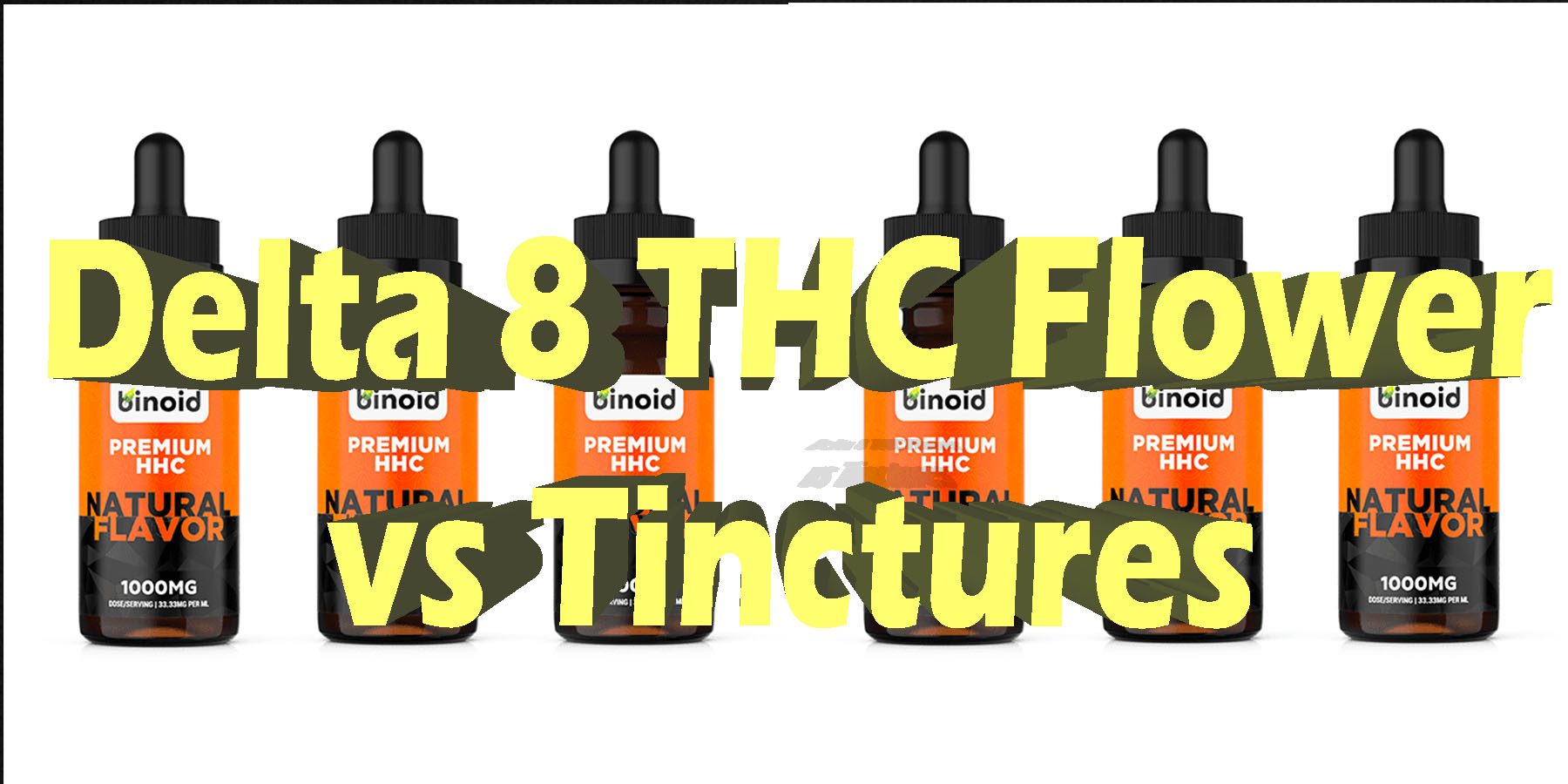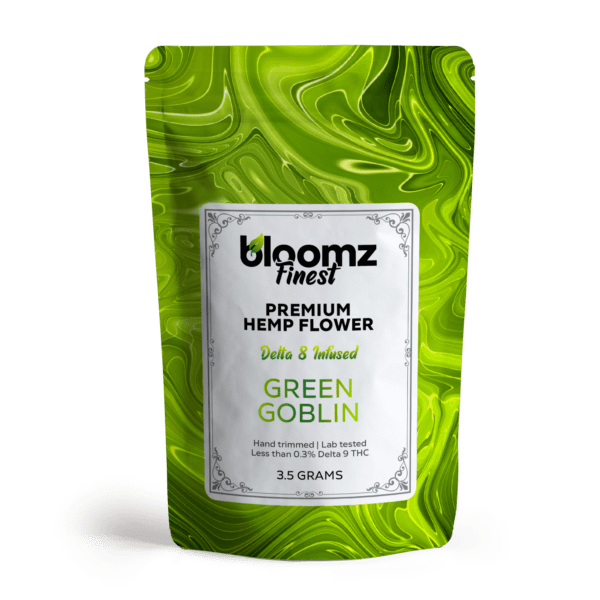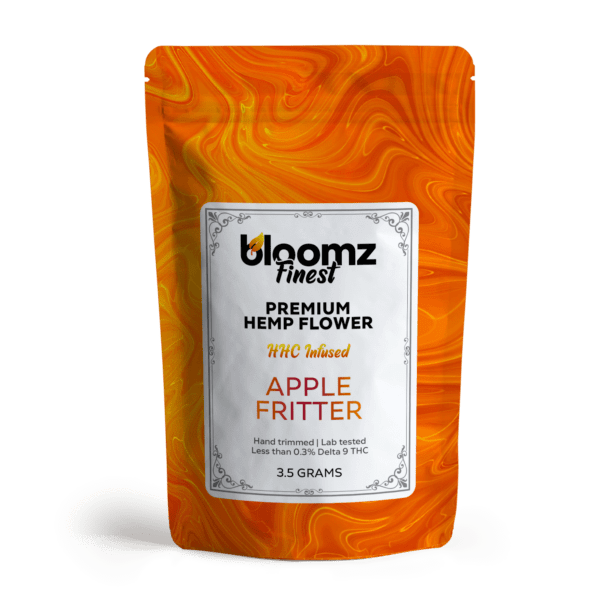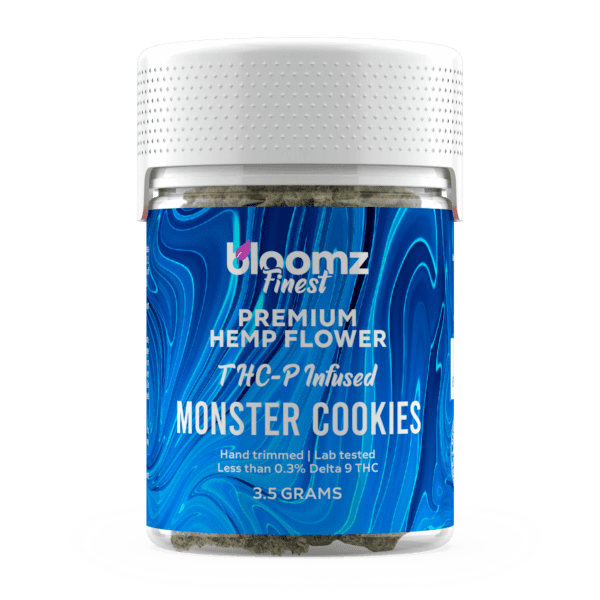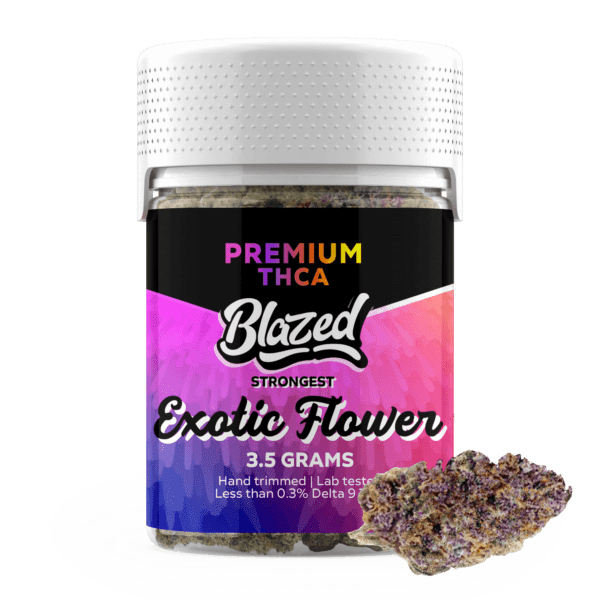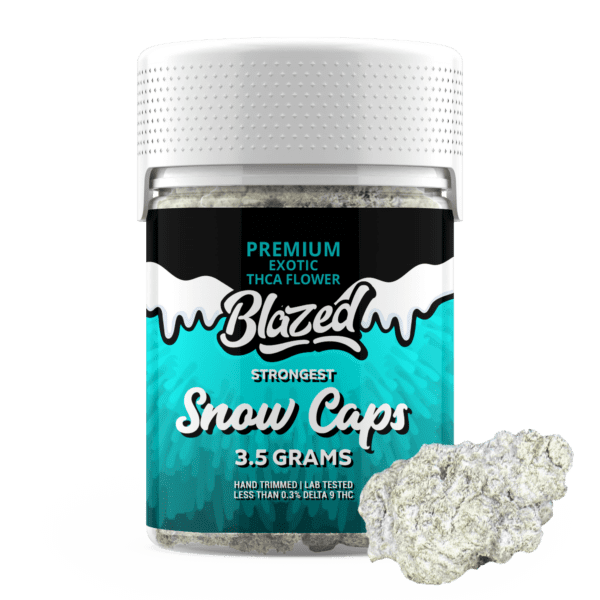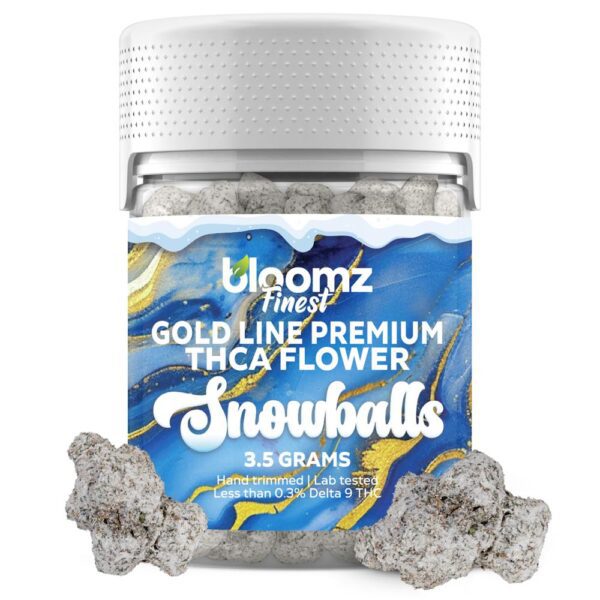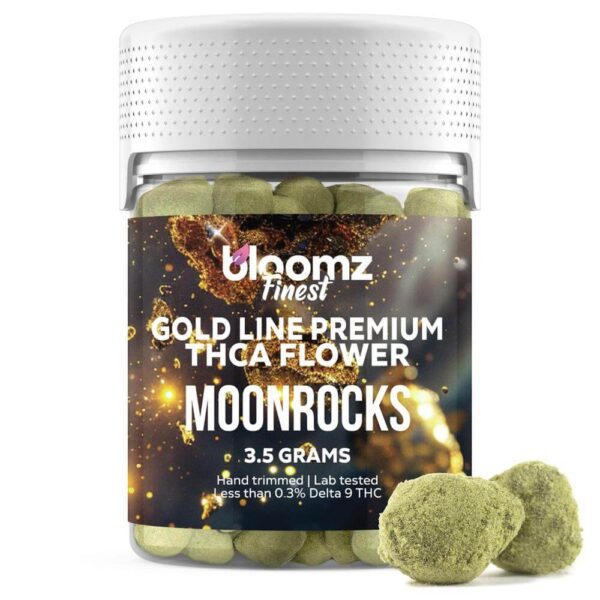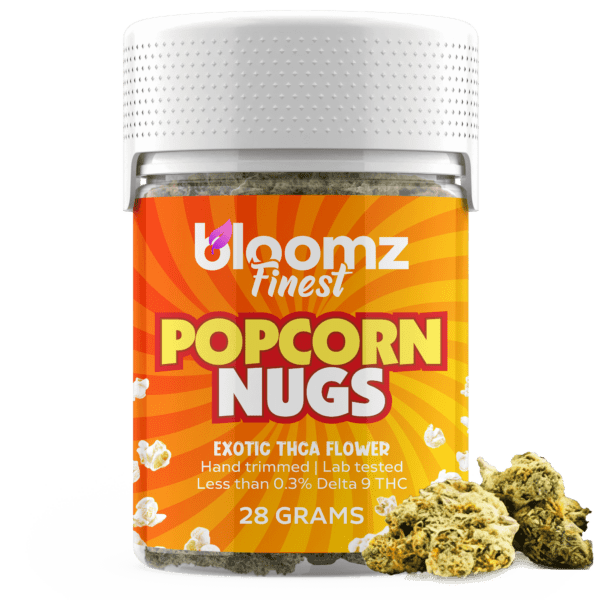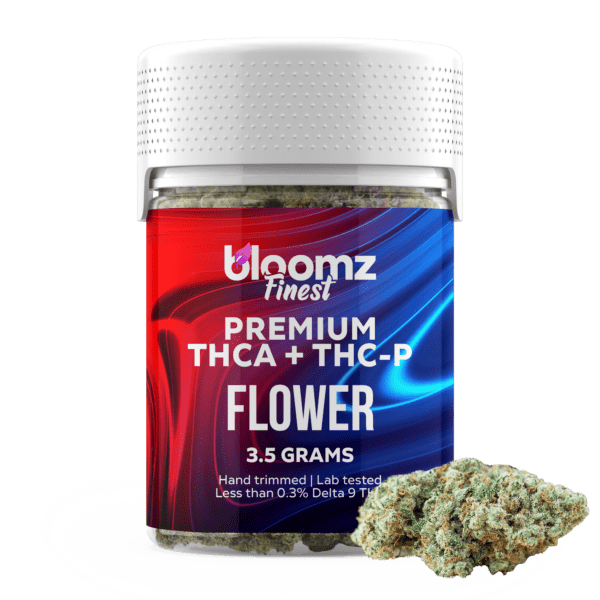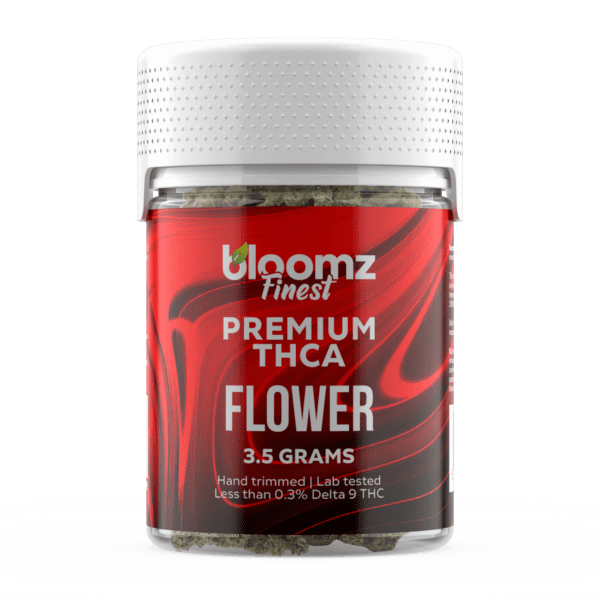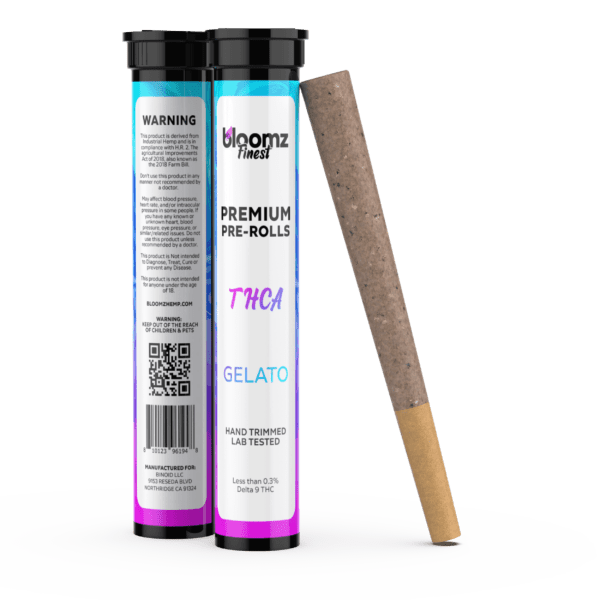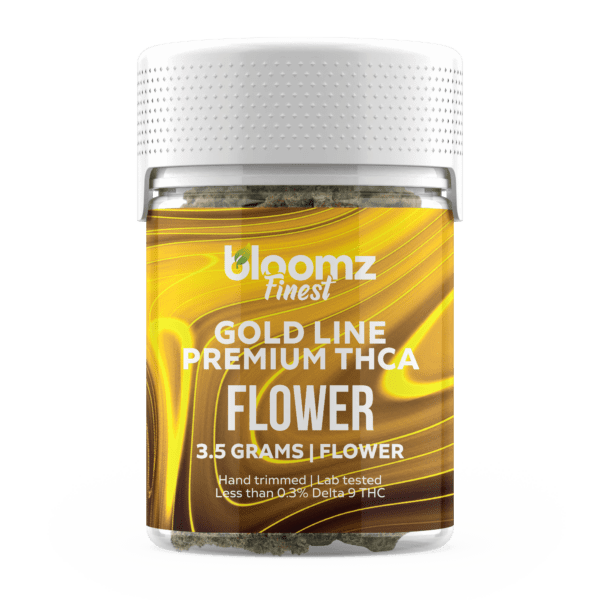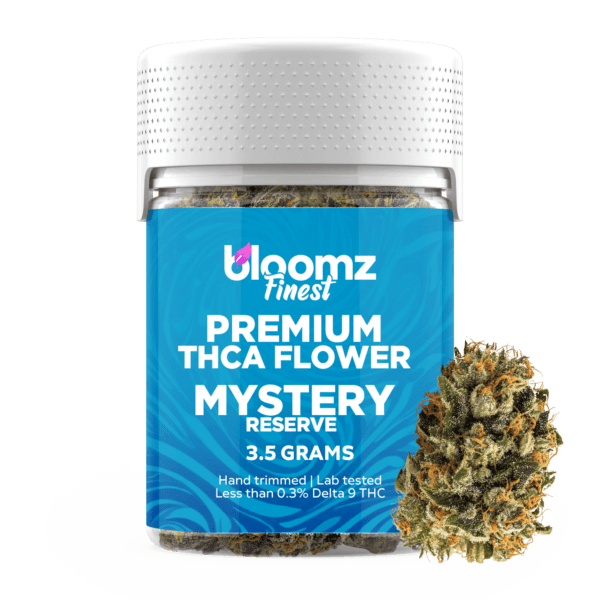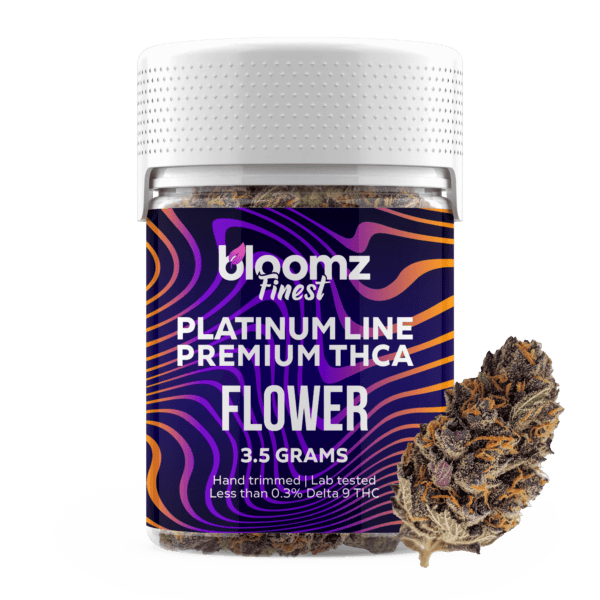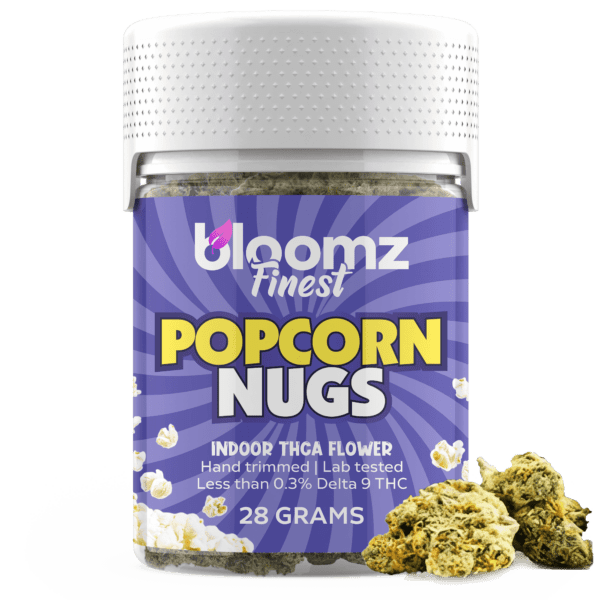In the expansive and ever-evolving landscape of personal wellness, the choices we make often reflect a deeper preference for how we interact with the world around us. A fascinating dichotomy presents itself to the modern consumer, a choice that mirrors the age-old distinction between the artisan and the apothecary. On one hand, we have the artisan’s creation: a product of tactile craft, where a natural material is skillfully enhanced to create a rich, multi-sensory experience. On the other, we have the apothecary’s formula: a product of clinical precision, where the pure essence of a plant is extracted and bottled for a measured, functional, and potent effect.
This very choice is beautifully encapsulated in the comparison between the aromatic, handcrafted nature of Delta 8 THC Flower and the discreet, potent simplicity of a liquid tincture. To explore this matchup is to weigh the appeal of the hands-on ritual against the controlled regimen, a decision that ultimately defines the entire character of the wellness journey to come.
TO BUY DELTA 8 THC FLOWER CLICK HERE
Recommended products
Why It’s Important to Breakdown the Matchup of Delta 8 THC Flower vs. Tinctures
In a bustling market brimming with innovation, a detailed comparison between two foundational product types like Delta 8 THC Flower and tinctures is essential for fostering true understanding. These two formats represent fundamentally different philosophies of consumption: one rooted in the timeless, ritualistic tradition of enjoying flower, and the other in the long and respected history of herbal apothecaries and modern extraction science. By carefully dissecting their unique characteristics—from their mechanisms of absorption and dosing precision to their flavor profiles and lifestyle integration—we can illuminate the distinct advantages and trade-offs of each.
This comparative analysis serves as a crucial tool, empowering consumers to move beyond surface-level familiarity and make a conscious, informed decision that aligns perfectly with their personal wellness goals, their demand for discretion, and their desired level of control over their experience:
Form & Function: The Ritual vs. The Regimen: At their core, these two products serve different functional philosophies. Delta 8 THC flower is about the ritual of consumption. It is a hands-on, sensory-driven process that involves the tactile feel of the bud, the aroma it releases, and the physical act of smoking or vaping. The experience itself is a key part of the appeal. Tinctures, by contrast, are all about the regimen. They are a functional, often clinical, tool for delivering a precise dose. The process is quick, simple, and devoid of ceremony, designed to fit seamlessly and discreetly into a structured wellness routine where consistency and measurement are paramount.
Distinct Pathways of Absorption: The way the body absorbs the active compounds from these two products is profoundly different, leading to unique experiential timelines. Delta 8 THC flower is consumed via inhalation, providing a direct and rapid route to the bloodstream through the lungs for a near-instantaneous onset of effects. Tinctures offer a unique, hybrid pathway. When held sublingually (under the tongue), the compounds are absorbed through the mucous membranes directly into the bloodstream, bypassing the liver for a relatively fast onset. The portion that is swallowed is then processed by the digestive system like a traditional edible, providing a longer-lasting second wave of effects. This creates a balanced experience that is faster than edibles but longer-lasting than inhalation.
The Dosing Dynamic: The Artist’s Feel vs. The Scientist’s Measurement: The approach to dosing with these two formats could not be more different. Consuming flower is an intuitive, qualitative act of titration—the “artist’s feel.” The user takes a puff, gauges the effects in real-time, and decides if more is needed. This offers incredible in-the-moment control but is impossible to quantify in milligrams. Tinctures represent the “scientist’s measurement.” The graduated dropper allows for the administration of an exact volume, which corresponds to a precise, quantifiable milligram dose. This makes tinctures the undisputed champion of consistency and repeatability.
Discretion and Lifestyle Integration: How a product fits into one’s daily life is a critical factor. Delta 8 flower, with its associated paraphernalia and unmistakable, pungent aroma, is a low-discretion product that demands a private setting for use. Tinctures are the polar opposite. A small, unassuming glass bottle can be carried anywhere, and a dose can be taken quickly and silently with absolutely no odor. This unparalleled discretion makes tinctures an incredibly versatile option that integrates effortlessly into almost any lifestyle, from the office to travel.
Contender #1: Delta 8 THC Flower
Delta 8 THC flower has carved out a significant niche in the contemporary hemp market, standing as a powerful symbol of the industry’s capacity for innovation. It presents a fascinating paradox: a product that looks, smells, and is consumed like traditional cannabis flower, yet delivers an experience that is uniquely its own. This is not a product that is simply harvested from the earth; it is a meticulously crafted item that marries high-quality, natural hemp with the precision of laboratory science.
Delta 8 flower offers a bridge for many consumers—a familiar and cherished format that provides a pathway to the novel, sought-after effects of Delta 8 THC. For many enthusiasts, its core appeal is this perfect blend of the old and the new: the timeless, hands-on ritual of consuming flower, paired with a modern, clear-headed, and functional sense of euphoria that distinguishes it from its more famous cannabinoid relatives. To engage with Delta 8 flower is to experience a compelling chapter in the ongoing story of hemp’s versatility.
So then, to fully appreciate Delta 8 flower, one must first understand the remarkable cannabinoid that defines it. Delta 8 Tetrahydrocannabinol (Delta 8 THC) is a fascinating analogue and isomer of the more well-known Delta 9 THC. The term “isomer” means that both molecules share the exact same chemical formula, but their atoms are arranged differently. The only distinction lies in the location of a specific double bond in their carbon chain; in Delta 8, this bond is on the eighth carbon atom, while in Delta 9, it is on the ninth. This subtle structural shift has a significant impact on how the molecule interacts with the body’s endocannabinoid system (ECS), particularly the CB1 receptors.
It binds less potently than Delta 9 THC, which is why users almost universally report that Delta 8 produces a milder, more manageable, and clearer-headed euphoric experience. While Delta 8 THC does occur naturally in the cannabis plant, it is only found in minuscule, non-economically viable trace amounts. Therefore, the vast majority of Delta 8 on the market is produced in a laboratory by converting hemp-derived CBD into Delta 8 THC through a chemical process called isomerization.
This brings us to a critical and often misunderstood point: there is no such thing as a naturally grown, high-Delta 8 THC cannabis flower, as any product marketed as “Delta 8 flower” is, in fact, a manufactured product. The process begins with a base of high-quality, legally compliant hemp flower, which is typically rich in CBD or another non-intoxicating cannabinoid like CBG. This hemp flower is then infused or coated with a pure Delta 8 THC distillate that was created in a lab.
Recommended products
The quality of the final product is therefore dependent on two key factors: the quality of the starting hemp flower and the purity and application method of the Delta 8 distillate. The production process of Delta 8 THC flower is a multi-stage endeavor that combines agriculture with chemistry to create the finished product that consumers enjoy:
Cultivation of Premium Hemp Flower: The foundation of any good Delta 8 flower is high-grade hemp flower. Reputable manufacturers source visually appealing, aromatic, and terpene-rich CBD or CBG flower that has been expertly grown, dried, and cured. The natural terpenes and minor cannabinoids in this base flower will contribute significantly to the final product’s aroma, flavor, and overall “entourage effect.”
Creation of Delta 8 THC Distillate: In a separate, highly controlled laboratory setting, the active ingredient is created. The process starts with pure CBD isolate, a crystalline powder that is over 99% pure CBD. This isolate is dissolved in a solvent and then combined with an acid catalyst. The mixture is heated and agitated for a specific period, which causes the CBD molecules to rearrange themselves, or “isomerize,” into Delta 8 THC molecules. The resulting liquid then undergoes extensive refinement and distillation to remove any residual solvents, acids, and unwanted byproducts, yielding a thick, potent, and highly pure Delta 8 THC distillate.
The Infusion and Coating Process: This is the step where the flower and the distillate are combined. There are several methods for achieving this. A common technique involves lightly heating the thick distillate to make it more fluid, and then spraying it as evenly as possible over the hemp buds while they are being gently tumbled. Another method involves using a solvent to liquefy the distillate into a finer mist for a more even coating. A more advanced, solventless technique is “cryo-infusion,” where the Delta 8 distillate is frozen and crushed into a fine powder, which is then electrostatically charged to help it adhere to the buds before being gently heated to infuse.
Post-Infusion Curing and Drying: After the sticky distillate has been applied, the flower is no longer in its ideal state. It is often wet or overly tacky to the touch. The product must then undergo a final curing or drying process to remove any excess moisture or solvents and to ensure the final product is pleasant to handle, grinds properly, and smokes evenly.
Comprehensive Third-Party Lab Testing: Before the final product can be sold, it is crucial that it is tested by an accredited third-party laboratory. The Certificate of Analysis (COA) for a Delta 8 flower is especially important. It not only verifies the potency of the Delta 8 THC but also must be scrutinized to ensure the product is free from any residual solvents or chemical reagents that may have been used in the isomerization or infusion processes, guaranteeing a safe and clean final product for the consumer.
The market for Delta 8 THC flower offers a variety of options that are primarily differentiated by the quality of the base hemp flower used and the method of its creation. Unlike naturally grown flower where categories like “exotic” refer to genetics, here they refer to the combination of premium hemp flower and the quality of the infusion process. Understanding these distinctions can help consumers select a product that meets their standards for quality, potency, and overall experience:
Indoor Delta 8 Flower: This is considered the top-shelf option. The process starts with premium, indoor-grown CBD or CBG hemp flower, which is prized for its dense bud structure, vibrant appearance, and rich terpene profile. This high-quality base is then carefully infused with pure Delta 8 distillate. The final product offers the best of both worlds: the pleasant aroma and flavor from the natural terpenes of the high-grade flower, combined with the clear, uplifting effects of the Delta 8 THC.
Outdoor Delta 8 Flower: This is a more budget-friendly category. The base material is sun-grown, outdoor CBD hemp flower. While often less cosmetically perfect and potentially less aromatic than its indoor counterpart, outdoor flower can still be of high quality and provides a more affordable foundation. Once infused, it delivers the same core Delta 8 THC effects but may have a more muted flavor and aroma profile compared to the premium indoor versions.
Delta 8 Smalls: Similar to other types of flower, “smalls” refer to the popcorn-sized buds from a harvest. Delta 8 smalls are simply smaller buds of CBD or CBG hemp flower that have been infused with Delta 8 distillate. They offer the exact same potency and experience as the larger nugs from the same batch but are sold at a lower price point, making them an excellent value for consumers who are not concerned with the cosmetic size of their buds.
Delta 8 Nugs: This term simply refers to the standard, full-sized buds of Delta 8 flower. These are the primary, A-grade buds of the base CBD flower that have been infused, representing the standard product that most consumers will encounter.
Delta 8 Moonrocks: This is a particularly popular and potent application for Delta 8 THC. The creation of a Delta 8 moonrock is a three-step process. It begins with a solid nug of CBD or CBG flower, which is then fully coated in a sticky layer of high-purity Delta 8 THC distillate. While the distillate is still wet, the entire bud is then rolled in a thick blanket of CBD or CBG kief (pure, sifted trichomes). The resulting product is incredibly potent, slow-burning, and offers a powerful, multi-layered experience.
Delta 8 Pre-Rolls, Blunts & Joints: For ultimate convenience, many manufacturers offer pre-packaged, ready-to-smoke options. These consist of ground-up Delta 8 flower that has been professionally rolled into papers (joints) or hemp wraps (blunts). They eliminate the need for any grinding or rolling on the part of the consumer, providing a simple, portable, and accessible way to enjoy the effects of Delta 8 flower without any of the associated preparation.
One of the most important aspects to understand when shopping for Delta 8 THC flower is the significance of the “strain” name. When you see a product labeled as “Sour Diesel Delta 8 Flower” or “OG Kush Delta 8 Flower,” that name refers to the genetic strain of the base CBD hemp flower that was used to create the product, not to a naturally grown Delta 8 strain. This is a crucial distinction.
The overall experience of the product will be a synergistic combination of two factors: the effects of the natural terpenes and minor cannabinoids present in the base hemp flower, and the overarching euphoric and relaxing effects of the Delta 8 THC distillate that has been applied to it. This allows for a curated experience based on the foundational characteristics of these three primary strain types:
Indica: When an Indica-dominant CBD hemp strain like Bubba Kush or Granddaddy Purple is used as the base for Delta 8 flower, the resulting product tends to lean heavily toward relaxation. The natural terpenes found in these strains, such as myrcene and linalool, are known for their calming and soothing properties. When combined with the comforting body buzz of Delta 8 THC, the result is a product that is perfectly suited for evening use, helping users unwind, decompress, and sink into a state of profound, blissful tranquility.
Sativa: Conversely, if a Sativa-dominant CBD hemp strain like Sour Space Candy or Lifter is used as the base, the experience is typically much more uplifting and cerebral. The terpenes commonly found in these strains, such as limonene and pinene, are associated with energetic and focus-enhancing effects. The addition of Delta 8 THC’s clear-headed euphoria complements these properties perfectly, creating a product that is ideal for daytime use, creative projects, social gatherings, or any activity where a boost of cheerful, motivating energy is desired.
Hybrid: Hybrid CBD hemp strains, which represent the majority of the market, offer a balanced profile of effects that fall somewhere between the two extremes. A well-balanced hybrid strain used as the base for Delta 8 THC flower can provide a “best of both worlds” experience. It might offer a gentle cerebral uplift and a wave of creative energy, followed by a soft, relaxing body sensation that doesn’t lead to sedation. This versatility makes hybrid Delta 8 flower a fantastic all-purpose option, suitable for almost any time of day or occasion.
The legal status of Delta 8 THC flower in the United States is one of the most complex and hotly debated topics in the entire hemp industry. Its legality is derived from the 2018 Farm Bill, which legalized hemp and defined it as cannabis containing less than 0.3% Delta 9 THC. Because Delta 8 THC is not Delta 9 THC, and because it is derived from legally grown hemp (specifically, from CBD), proponents argue that it is a federally legal hemp product. This interpretation has allowed for its sale in many states across the country, particularly those that do not have legal adult-use cannabis programs.
However, this status is under significant challenge. Because Delta 8 is created through a chemical conversion process in a lab, some federal agencies and numerous states have argued that it qualifies as a “synthetically derived” cannabinoid or have passed laws to explicitly ban or severely restrict its sale. This has resulted in a constantly shifting and confusing legal patchwork where Delta 8 flower may be fully legal in one state, but completely illegal in a neighboring one. It is absolutely imperative for consumers to research the specific laws and regulations regarding Delta 8 THC in their own state and municipality before attempting to purchase or possess it.
Recommended products
The methods for consuming Delta 8 THC flower are identical to those for any other type of cannabis flower, as the goal is to heat the product to activate and aerosolize the cannabinoids for inhalation. The chosen method can influence the flavor, convenience, and overall experience of the session. It is worth noting that because Delta 8 flower is coated in a sticky distillate, it can sometimes be more difficult to grind than non-infused flower, occasionally gumming up the teeth of a grinder:
Vaping (using a portable or desktop vaporizer): Vaporizing is often considered the optimal method for consuming infused flower like Delta 8. A vaporizer heats the flower to a temperature that is hot enough to turn the Delta 8 THC distillate and the natural terpenes into an inhalable vapor, but not hot enough to cause combustion. This provides a smoother, cleaner, and more flavorful experience that allows the user to taste the underlying terpenes of the base flower. It is also more efficient, as less of the active compound is destroyed by high heat.
Smoking: This is the most traditional and straightforward method. It involves combusting the Delta 8 flower in a pipe, bong, or by rolling it into a joint or blunt, and then inhaling the smoke. While the high heat of combustion can mute some of the more delicate flavors, many users prefer the ritualistic nature and the robust, immediate effects that smoking provides. Water pipes, or bongs, can help to cool and filter the smoke for a smoother experience.
Cooking/Baking: While less common, Delta 8 flower can also be used to create homemade edibles. The flower would first need to be decarboxylated in an oven to ensure all cannabinoids are fully activated. After this heating process, the flower can be infused into a fat like butter or oil. This infused fat can then be used in any recipe. However, given the widespread availability and precise dosing of commercially made Delta 8 edibles, most users opt for the convenience of smoking or vaping the flower directly.
The overall effects of Delta 8 THC flower are what has driven its immense popularity. Users almost universally describe the experience as a much more manageable and functional version of the effects produced by its more potent cousin, Delta 9 THC. The feeling is characterized by a distinct sense of uplifting euphoria and a pleasant, “buzzy” body sensation that promotes deep feelings of relaxation and contentment. However, what sets it apart is the clear-headed nature of the mental effects.
Many users report that they can remain focused, coherent, and sociable without the intense cognitive fogginess or potential for unease that can sometimes accompany high doses of Delta 9 THC. This makes Delta 8 flower a popular choice for a wide range of activities, from relaxing at home with a movie to engaging in creative pursuits or socializing with friends. The experience is often described as being a perfect middle ground—noticeably euphoric and relaxing, yet gentle enough to allow the user to remain present and in control.
Pros & Cons
Like any innovative product, Delta 8 THC flower comes with its own unique set of advantages and potential drawbacks. These are crucial to consider when deciding if this manufactured form of flower is the right choice for your needs. Its pros often revolve around its unique effects and legal accessibility, while its cons tend to relate to its artificial nature and the inconsistencies of the manufacturing process.
Pros:
A Milder, More Clear-Headed Experience: The most celebrated benefit of Delta 8 THC is its unique psychoactive profile. It provides a genuine sense of euphoria and relaxation but is significantly less potent than Delta 9 THC. This results in a more manageable, clear-headed experience that many users find is less likely to induce feelings of unease or fogginess, making it a more functional and approachable option for a wider range of activities.
Legal Accessibility in Certain Regions: Due to its legal standing under the 2018 Farm Bill, Delta 8 THC is legally available for purchase in many states where Delta 9 THC remains prohibited. This has provided a legal pathway for millions of people to access a euphoric, hemp-derived product that they would otherwise not be able to obtain.
Combines Familiar Ritual with Novel Effects: Delta 8 flower offers the best of both worlds for many consumers. It allows them to continue enjoying the timeless, hands-on ritual of grinding, packing, and smoking or vaping flower, which is a cherished process for many. At the same time, it delivers the novel, uplifting, and functional effects of Delta 8 THC.
Fast-Acting Effects via Inhalation: Like all forms of flower, the effects of Delta 8 flower are felt almost instantaneously when smoked or vaped. This rapid onset provides immediate feedback, which is perfect for users who want to feel the effects right away. It also allows for easy dose titration, as one can simply take one puff and wait to assess the effects before proceeding.
Wide Variety of Strain Experiences: Because Delta 8 THC flower is made by infusing high-quality CBD hemp flower, consumers can choose from a vast library of underlying strains. By selecting a product based on an Indica, Sativa, or Hybrid hemp strain, users can tailor the experience to be more relaxing, more uplifting, or more balanced, thanks to the unique terpene profiles of the base flower.
A Potent and Enjoyable Body Sensation: Many users report that Delta 8 THC produces a particularly noticeable and pleasant body sensation. This “body buzz” can feel deeply relaxing and comforting, as if a wave of warmth and ease is washing over the body. This makes it an excellent choice for unwinding and decompressing after a long or physically demanding day.
Generally More Affordable: In many markets, Delta 8 THC products, including flower, are more affordable than their Delta 9 THC counterparts from state-licensed dispensaries. This lower price point, combined with its legal accessibility, makes it an attractive option for budget-conscious consumers.
Less Intense Aroma Than Traditional Cannabis: While Delta 8 flower does have an aroma from the base hemp flower, the process of infusing it with distillate can sometimes mute the overall pungency. For some users, this can be an advantage, as it may be slightly more discreet in terms of odor compared to extremely “loud” top-shelf traditional cannabis.
Supports the Hemp Farming Industry: The creation of Delta 8 flower relies on a steady supply of high-quality CBD and CBG hemp flower. The popularity of this product category directly supports hemp farmers across the country, providing them with a crucial market for their agricultural products.
A “Social” Buzz: The clear-headed and functional nature of the Delta 8 experience is often described as being more “social.” Users may feel more talkative, engaged, and less introspective compared to how they might feel with more potent cannabinoids, making it a popular choice for sharing with friends or enjoying at social gatherings.
Cons:
It is a Manufactured, Not Natural, Product: The most significant drawback for purists is that Delta 8 flower is not a product of nature. The active ingredient is created in a lab and then applied to a different plant. This artificial nature and the multi-step manufacturing process can be a major turn-off for consumers who prefer to consume products in their most natural, unprocessed state.
Potential for Inconsistent Quality: The quality of Delta 8 flower can vary dramatically from one brand to another. The final product can be negatively impacted by a low-quality base flower, an impure distillate, or an uneven and sloppy infusion process. This can result in a harsh-smoking, bad-tasting product with inconsistent effects.
Risk of Residual Solvents or Contaminants: The chemical process used to create Delta 8 THC from CBD involves the use of solvents and acid catalysts. If the final distillate is not properly refined and tested, there is a risk that these harmful residues could end up in the final product. It is absolutely crucial to only purchase from reputable brands that provide comprehensive third-party lab tests.
Complicated and Uncertain Legal Status: While federally legal under one interpretation of the Farm Bill, the legal status of Delta 8 THC is highly volatile and contested. Numerous states have banned it, and it exists in a constant state of legal uncertainty. Consumers run the risk of purchasing a product that may become illegal in their state overnight or unknowingly violating local laws.

Contender #2: Tinctures
Stepping into the spotlight from a long and storied history that stretches from the clay pots of ancient Egyptian herbalists to the gleaming laboratories of modern pharmacology, the tincture represents the absolute pinnacle of precision, discretion, and concentrated botanical power. This humble yet incredibly effective format, consisting of a potent liquid extract held in a glass bottle with a graduated dropper, is the direct inheritor of the apothecary’s legacy. It is a tool designed to distill the very essence of a plant, concentrating its active compounds for a functional, measurable, and highly efficient application.
Tinctures masterfully bridge the experiential gap between the fleeting, instantaneous effects of inhalation and the slow, profound journey of solid edibles, offering a unique, hybrid experience that has made them a cornerstone of the modern wellness community. For the discerning individual who values meticulous control, a completely smoke-free experience, and unparalleled discretion, the tincture stands as a formidable and highly sophisticated contender.
At its main fundamental, a tincture is a concentrated liquid extract created by soaking a botanical material in a solvent. This age-old technique, known as maceration or percolation, allows the solvent to systematically pull out the desired active compounds from the plant matter, resulting in a potent, infused liquid that contains the plant’s distilled essence. The choice of solvent, or “menstruum,” is critical. Traditional herbal tinctures almost always use high-proof alcohol (ethanol), which is an excellent solvent for a wide range of plant compounds and also acts as a powerful natural preservative, giving the final product a very long shelf life.
However, in the modern wellness market, the term is used more broadly. Oil-based tinctures, which are technically infusions, are now the most common format for cannabinoids. They use a carrier oil like MCT (medium-chain triglyceride) oil, which is prized for its neutral taste and the fact that its fats are metabolized quickly by the body, potentially aiding in faster absorption. Other oils like hemp seed oil, which adds its own nutritional benefits of omega fatty acids, or olive oil are also used. Glycerites are another option, using vegetable glycerin as the solvent to create a sweet, alcohol-free tincture that is palatable and suitable for those with alcohol sensitivities.
The method of consumption is what truly sets tinctures apart, offering a unique, dual pathway for absorption. The most common and effective method is sublingual administration. This involves using the dropper to place the desired dose of liquid directly under the tongue and holding it there for at least 60 to 90 seconds before swallowing. Anatomically, the floor of the mouth is covered by a very thin mucous membrane (epithelium) and is densely populated with a network of capillaries that lead directly into the venous circulation. Because cannabinoids and many other active compounds are lipophilic (fat-soluble), they can readily pass through this thin membrane and be absorbed directly into the bloodstream.
This route completely bypasses the harsh, acidic environment of the stomach and, more importantly, avoids first-pass metabolism in the liver. This direct-to-bloodstream pathway is the reason for the tincture’s relatively fast onset. Of course, any portion of the tincture that is swallowed follows the path of simple ingestion, behaving like a traditional edible and undergoing the slower digestive process, which provides a longer-lasting secondary wave of effects.
The incredible versatility of the tincture format allows for the creation of highly specialized formulas designed to support very specific wellness goals. Manufacturers have become masters of synergistic blending, creating sophisticated “stacks” of active ingredients that work in concert to produce a more targeted and effective product than any single compound could on its own. This has led to a market filled with purpose-driven tinctures catering to a wide range of consumer needs.
Sleep: Tinctures formulated to support a restful night are among the most sought-after products. These intricate blends often target different aspects of sleep, such as “sleep latency” (the time it takes to fall asleep) and “sleep architecture” (the structure of the sleep cycles). They may start with a base of a relaxing cannabinoid like CBN and then incorporate melatonin to help regulate the circadian rhythm. These are often enhanced with a curated selection of herbal nervines like valerian root, chamomile, and newer additions like California Poppy or Hops, all of which have a long history of traditional use for promoting a state of deep calm and tranquility conducive to sleep.
Energy: Positioned at the opposite end of the functional spectrum, energy-focused tinctures are crafted to provide a clean, sustained boost without the jitters associated with high doses of caffeine. These formulas might feature stimulating cannabinoids like THCV and are often fortified with a full spectrum of B-vitamins, which are essential cofactors in the body’s cellular energy production (the Krebs cycle). Many advanced formulas also include powerful adaptogenic herbs like Rhodiola rosea or Panax ginseng, and may even contain Coenzyme Q10 (CoQ10), a vital compound for mitochondrial health and energy conversion.
Relaxation: Carefully formulated to be distinct from a sleep aid, relaxation tinctures are designed to ease everyday tensions and promote a sense of calm well-being without causing drowsiness, making them suitable for daytime use. They are typically built on a high-concentration base of CBD. This is often complemented by the addition of the amino acid L-Theanine, known for supporting alpha brain wave activity associated with a state of “wakeful relaxation.” To further enhance these effects, extracts from soothing botanicals like lemon balm, passionflower, and the powerful nervine herbs skullcap and milky oats are often included to help support the body’s parasympathetic (“rest and digest”) nervous system.
Wellness: This foundational category includes tinctures designed for daily use to support the body’s overall balance, or homeostasis. These products are often built around a full-spectrum cannabinoid extract to leverage the “entourage effect,” which includes minor cannabinoids like CBC (Cannabichromene). To create a comprehensive daily supplement, these tinctures may be fortified with powerful antioxidants from superfoods like turmeric (containing curcumin, often paired with black pepper extract for enhanced bioavailability) or other beneficial plant compounds like resveratrol from grapes or quercetin from onions.
Beauty: A sophisticated and rapidly growing category, beauty-focused tinctures, or “nutricosmetics,” operate on the principle of supporting skin, hair, and nail health from within. These formulas typically combine a base of a balancing cannabinoid like CBD with a host of ingredients known for their role in supporting the body’s structural integrity. This can include hydrolyzed collagen peptides, biotin (Vitamin B7) for keratin production, hyaluronic acid for skin hydration, and silica-rich herbs like Horsetail to support connective tissue health.
Beyond these complex botanical blends, the tincture format is an extremely common and effective delivery system for essential vitamins and minerals. Liquid vitamin tinctures have become a popular alternative to pills, especially for specific populations like the elderly or bariatric patients who may have difficulty swallowing pills or compromised digestive absorption.
Many proponents argue that liquid supplements offer enhanced bioavailability, as the nutrients are already in a dissolved state and do not require the body to break down solid binders and fillers. Common vitamin tinctures include Vitamin D3, often paired with Vitamin K2 in an oil base, as K2 is believed to help direct calcium into the bones and away from the arteries. Vitamin B12 tinctures are also immensely popular, especially for those on plant-based diets, as this vitamin is crucial for energy and nerve function.
The most vibrant, innovative, and rapidly evolving segment of the modern tincture market is once again, unquestionably those infused with a vast array of hemp-derived cannabinoids. The unparalleled precision dosing, smoke-free nature, and versatility of the tincture format make it the perfect medium for consumers to safely and effectively explore the nuanced world of these fascinating compounds. The market for cannabinoid-infused tinctures is often stratified into tiers based on the potency and psychoactive nature of the cannabinoids used, empowering consumers to select a product that perfectly aligns with their individual tolerance, experience level, and desired outcome:
Non-Intoxicating: This is the foundational category for wellness-focused users. These tinctures contain cannabinoids that do not produce a euphoric “high.” CBD is the most well-known, used for general balance and well-being. CBN is highly sought after for its relaxing and sedative properties, making it a star in nighttime formulas. CBG is another popular option, often explored for its soothing effects. This category also includes tinctures made with the raw, unheated acidic forms of cannabinoids like CBDA and CBGA, which are believed to have their own unique wellness properties separate from their decarboxylated counterparts.
Mild Potency: For users seeking a gentle, functional, and often non-overwhelming psychoactive experience, this tier is ideal. Tinctures featuring Delta 10 THC are known for a mild, sativa-like cerebral buzz that is often described as uplifting and creativity-enhancing. THCV is another unique cannabinoid in this category, sometimes called “diet weed,” as it can produce a short-lived, clear-headed, and stimulating effect that some users find suppresses appetite, a stark contrast to the typical effects of THC.
Moderate Potency: This tier includes the most common and well-known intoxicating cannabinoids. Delta 8 THC tinctures provide a robust euphoric effect that is often described as being clearer-headed and less intense than traditional THC. Delta 9 THC tinctures, made with hemp-derived THC in compliance with the Farm Bill, offer the classic, potent, and well-rounded experience that cannabis is famous for. Tinctures can also contain THCA, which will be converted to Delta 9 THC when metabolized by the liver, behaving similarly to a Delta 9 tincture when ingested.
Strong Potency: This category is reserved for experienced users with a high tolerance, as these cannabinoids are significantly more potent than Delta 9 THC. THC-P is a standout, believed to bind to the CB1 receptor over 30 times more effectively than Delta 9 THC, resulting in an exceptionally powerful and long-lasting experience. Other novel, high-potency cannabinoids like THC-B, THC-H, and the hydrogenated cannabinoid HHC (which has a potency similar to Delta 9 THC but is included here for its novelty and strength) also fall into this category, offering a new frontier of potent effects for the seasoned consumer.
Amanita mushroom-infused tinctures offer a potent and precisely dosable way to experience the unique psychoactive properties of this fungus. It is essential to reiterate that Amanita mushrooms do not contain psilocybin; their effects are derived from the compound muscimol. In a tincture format, a concentrated extract of muscimol is suspended in a liquid base, allowing for microdosing or macrodosing with drop-by-drop accuracy.
This is particularly important with Amanita, as the experience can be very intense and is highly dose-dependent. The effects are often described as dissociative, sedative, and deeply dream-like, sometimes involving auditory hallucinations or a distorted perception of time and space. A tincture provides a much safer and more consistent method of consumption than foraging or consuming the raw mushroom, which can have variable potency.
Functional mushroom-infused tinctures are a staple of the modern wellness and nootropics movements. These non-psychoactive extracts are designed for daily use to support everything from cognitive function to immune health. The tincture format allows for a highly concentrated dose of the mushroom’s beneficial compounds, such as beta-glucans and triterpenes, without having to consume the whole mushroom powder.
Popular functional mushroom tinctures include Lion’s Mane for its reputed benefits to cognitive function and nerve support; Reishi, known as an adaptogen that helps the body manage everyday challenges and promotes relaxation; Cordyceps for supporting energy, stamina, and athletic performance; and Chaga and Turkey Tail, both prized for their incredibly high antioxidant content and immune-supportive properties.
Kratom tinctures, often sold as highly concentrated liquid extracts, are a popular choice for experienced Kratom users seeking convenience and potency. These tinctures are made by extracting the active alkaloids, primarily Mitragynine and 7-hydroxymitragynine, from the Kratom leaf. The resulting liquid is far more potent by volume than raw powder, meaning only a small amount is needed.
This format allows for rapid absorption and a quick onset of the plant’s dose-dependent effects: stimulating and energizing at lower doses, and more relaxing and euphoric at higher doses. Tinctures are often sold as “full-spectrum” extracts, containing a range of alkaloids, or as isolated extracts, providing a more targeted experience.
Kava, the traditional relaxation-promoting root from the Pacific Islands, is also available in a convenient tincture format. Kava tinctures capture the active compounds, known as kavalactones, in a concentrated liquid form. This provides an easy, portable, and smoke-free way to experience the calming, sociability-enhancing effects of the plant. A few drops held under the tongue can quickly promote a sense of mental tranquility and physical ease, making it an excellent tool for unwinding after a stressful day or for use as a social lubricant in place of alcohol. The tincture format allows for precise control over the dose, so the user can dial in the desired level of relaxation without becoming overly sedated.
The overall effects of a tincture are defined by its unique hybrid absorption mechanism, which can be thought of as a “two-stage rocket.” When a tincture is held under the tongue, the sublingual absorption acts as the first-stage booster, firing up the experience relatively quickly. This direct-to-bloodstream pathway provides a rapid launch into the desired effects, typically within 15 to 45 minutes, a stark contrast to the long countdown of a traditional edible.
Then, the portion of the tincture that is swallowed acts as the second-stage engine. It is processed by the digestive system and liver, providing a long, slow, and sustained burn that keeps the experience cruising smoothly for several hours. This two-stage effect makes tinctures a wonderfully balanced and efficient option, offering a desirable middle ground between the explosive, short-lived launch of inhalation and the slow, long-haul journey of a solid edible.
Pros & Cons
The tincture, with its long history and modern applications, offers a compelling list of benefits, particularly in the realms of precision and discretion. However, this format also has its own set of trade-offs, which are important to consider. Its strengths lie in its clinical control and versatility, while its weaknesses are often related to its taste and the specific nature of its effects curve.
Pros:
Unmatched Dosing Precision: The single greatest advantage of a tincture is the ability to achieve a highly precise and quantifiable dose. The included graduated dropper allows the user to measure out an exact volume of liquid, which corresponds to a specific milligram amount of the active ingredient. This drop-by-drop control is ideal for microdosing or for users who need to find and maintain a consistent therapeutic window for their wellness routine.
Ultimate Discretion and Portability: Tinctures are the epitome of discreet consumption. A small, typically 1-ounce glass bottle is easy to carry in a pocket, purse, or desk drawer without attracting any attention. A dose can be administered quickly, quietly, and without producing any smoke, vapor, or noticeable odor, making it suitable for use in a wide variety of settings.
A Unique Hybrid Onset and Duration: The sublingual method of absorption offers a “best of both worlds” timeline. It provides a faster onset of effects than traditional edibles, allowing the user to feel the benefits relatively quickly. At the same time, it still offers a longer duration of effects than inhalation, providing a sustained experience that can last for several hours, making it a highly efficient and versatile option.
A Completely Smoke-Free Experience: For the large number of consumers who wish to avoid inhalation due to respiratory health concerns, personal preference, or the environment they are in, tinctures are a perfect solution. They deliver the active compounds effectively without any involvement of the lungs, providing a clean, smoke-free alternative.
Minimal Caloric and Sugar Content: Unlike baked goods or many gummies, tinctures are virtually free of calories, sugars, or other additives. They are typically just a botanical extract and a carrier oil. This makes them an ideal choice for individuals on strict diets, such as ketogenic diets, or for anyone who is mindful of their sugar and calorie intake.
Exceptional Versatility of Use: Tinctures are incredibly versatile. They can be taken sublingually for fast absorption, swallowed directly, or easily added to almost any food or beverage. A few drops can be mixed into a morning smoothie, a cup of tea, or even a salad dressing, making it simple to incorporate them into an existing daily routine.
Long Shelf Life and Stability: When stored properly in a cool, dark place, tinctures, especially those with an alcohol or MCT oil base, are very shelf-stable. They can maintain their potency for a year or even longer without significant degradation. This allows consumers to purchase them without worrying about rapid spoilage.
Cost-Effective in the Long Run: Because tinctures are so highly concentrated, a single bottle can contain a large number of doses. While the initial upfront cost of a bottle might seem higher than a single pre-roll, the cost per milligram of the active ingredient is often significantly lower, making tinctures a very economical choice for regular users.
Ideal for Creating Custom Blends: Advanced users can use individual tinctures of different compounds to create their own custom ratios. For example, one could combine a CBD tincture with a CBG tincture to create a personalized blend that meets their specific needs. This level of customization is not possible with most other pre-formulated products.
A Gentle and Controllable Onset: The gradual and predictable onset of effects from a sublingually administered tincture is often perceived as a gentler experience compared to the rapid rush of inhalation. This controlled build-up can be more comfortable and less overwhelming for new users or those sensitive to strong effects, making for a more manageable and pleasant introduction.
Cons:
The Taste Can Be Unpleasant: One of the most common complaints about tinctures is their taste. The natural flavor of the botanical extract, especially from hemp, can be very earthy, bitter, and “hempy.” While many brands add flavorings like mint or citrus to mask this, the underlying taste of the carrier oil and the extract can still be quite strong and unpalatable for some users.
Requires Holding Under the Tongue: To achieve the fastest onset of effects, the user must hold the oily liquid under their tongue for 60-90 seconds. Some people find this sensation to be awkward, uncomfortable, or unpleasant. It also requires a bit of patience and mindfulness, making it a less “fire and forget” method than simply swallowing a capsule.
Potential for Messiness or Spillage: Dealing with a liquid oil and a dropper can sometimes be messy. It is possible to spill the oil, which can be difficult to clean and wastes the product. The dropper can also become sticky over time, making it a less clean and convenient method compared to a self-contained product like a gummy or capsule.
Delayed Gratification Compared to Inhalation: While tinctures are faster than traditional edibles, they are still significantly slower than inhalation. For users seeking immediate, on-the-spot effects for an acute need, the 15-45 minute wait time for a tincture to take effect can be a significant drawback. It does not provide the same level of instant gratification as smoking or vaping.
How to Go About Choosing Which Option
The journey to choosing between the artisan-crafted experience of Delta 8 THC flower and the apothecary’s precision of a tincture is ultimately a journey of self-discovery. This decision is not about crowning a superior product but about identifying the superior product for your unique needs, preferences, and lifestyle. It requires a moment of reflection on what you value most in an experience: the immersive, sensory ritual of the enhanced plant or the discreet, clinical control of its refined essence? By honestly assessing your priorities regarding speed, control, discretion, and flavor, you can confidently navigate this choice and select the format that will seamlessly and satisfyingly integrate into your life.
To bring this choice into clearer focus, it is helpful to weigh your preferences across several key differentiating factors. By considering where you stand on each of these points, the path to your ideal product will become much more apparent:
Timeline of Experience (Onset & Duration): This is the most critical question. Do you need immediate effects, something you can feel within moments to address a current need? If speed is your absolute priority, the near-instantaneous onset of inhaled Delta 8 THC flower is unbeatable. Or, do you prefer a balance—an experience that is faster than a traditional edible but lasts for several hours with a steady, predictable curve? If this “best of both worlds” timeline appeals to you, the unique hybrid absorption of a sublingual tincture is the perfect match.
Dosing Philosophy (Intuitive vs. Quantitative): How do you prefer to manage your dose? Do you enjoy the organic, intuitive process of titration—taking a puff, waiting a moment, and assessing how you feel before proceeding? This is the art of using flower. Or, are you a data-driven individual who values precision and repeatability above all else? If you want to know that you are taking exactly 15mg every single time, the unparalleled, drop-by-drop accuracy of a tincture is the only choice that will satisfy that need for quantitative control.
Discretion and Lifestyle Integration: Consider the environment in which you’ll be using the product. Is it primarily for use in the comfort and privacy of your own home, where the aroma and ritual of flower can be freely enjoyed? In that case, flower is an excellent option. However, if you need a product that you can use on the go, at work, or in any situation that demands subtlety and privacy, the odorless, compact, and unassuming nature of a tincture makes it the vastly superior choice for a discreet lifestyle.
The Importance of the Sensory Experience: How much does taste and smell matter to you? If you are a connoisseur who delights in the rich, complex, and varied aromatic profiles of different hemp strains, then the terpene-driven sensory experience of flower is a major part of the appeal. If, on the other hand, you find the taste of hemp to be bitter and unpleasant and you prioritize function over flavor, the more neutral (or artificially flavored) and less sensorially-focused experience of a tincture will be a better fit.
|
Feature |
Delta 8 THC Flower |
Tinctures |
|---|---|---|
|
Product Nature |
Enhanced Agricultural Product (Infused Hemp) |
Concentrated Liquid Extract |
|
Primary Method |
Inhalation (Smoking/Vaping) |
Sublingual (Under the tongue) & Ingestion |
|
Onset Time |
Very Fast (2-10 minutes) |
Fast-ish (15-45 minutes) |
|
Duration of Effects |
Shorter (1-3 hours) |
Medium to Long (3-6 hours) |
|
Dosing Control |
Low precision (intuitive titration) |
Highest precision (drop-by-drop accuracy) |
|
Discretion |
Very Low (strong odor, requires gear) |
Very High (no odor, discreet bottle) |
|
Flavor Profile |
Natural, earthy, terpene-driven |
Oily, can be bitter/earthy, often flavored |
|
Dietary Impact |
None (no calories or sugar) |
Negligible (virtually no calories or sugar) |
|
Key Feature |
Ritualistic, sensory, fast-acting |
Precise, versatile, discreet, smoke-free |
|
Best For |
Users wanting immediate effects and the flower ritual |
Users wanting precise dosing and a balanced onset/duration |
The Artist and The Alchemist: Crafting Your Ideal Experience
In the final analysis, the decision between Delta 8 THC flower and a tincture is a choice between two profound and valid philosophies: that of the artist and that of the alchemist. The flower represents the artist’s touch, taking a natural canvas and skillfully enhancing it to create a holistic, sensory masterpiece. It invites a ritual, an immersive engagement that honors the integrity of the original form while adding a new layer of character. The tincture, conversely, represents the alchemist’s pursuit of the pure essence. It is the result of a meticulous process of extraction and refinement, designed to isolate the most potent spirit of the plant for an effect that is precise, controlled, and functional.
Neither is inherently superior, for the true value lies not in the product itself, but in its resonance with the user’s intent. The ultimate goal is to find the form that best aligns with your personal definition of wellness, whether it is found in the aromatic craft of the artist or in the profound potential of the alchemist’s single, perfect drop.
TO BUY DELTA 8 THC FLOWER CLICK HERE
Recommended products
-
THCA Flower – Indoor Exotics – Gold Line
$37.99$69.99 -
THCA Flower – Mystery Reserve
$41.99$79.99 -
THCA Flower – Platinum Line
$49.99$79.99 -
THCA Smalls
$149.99$256.99

